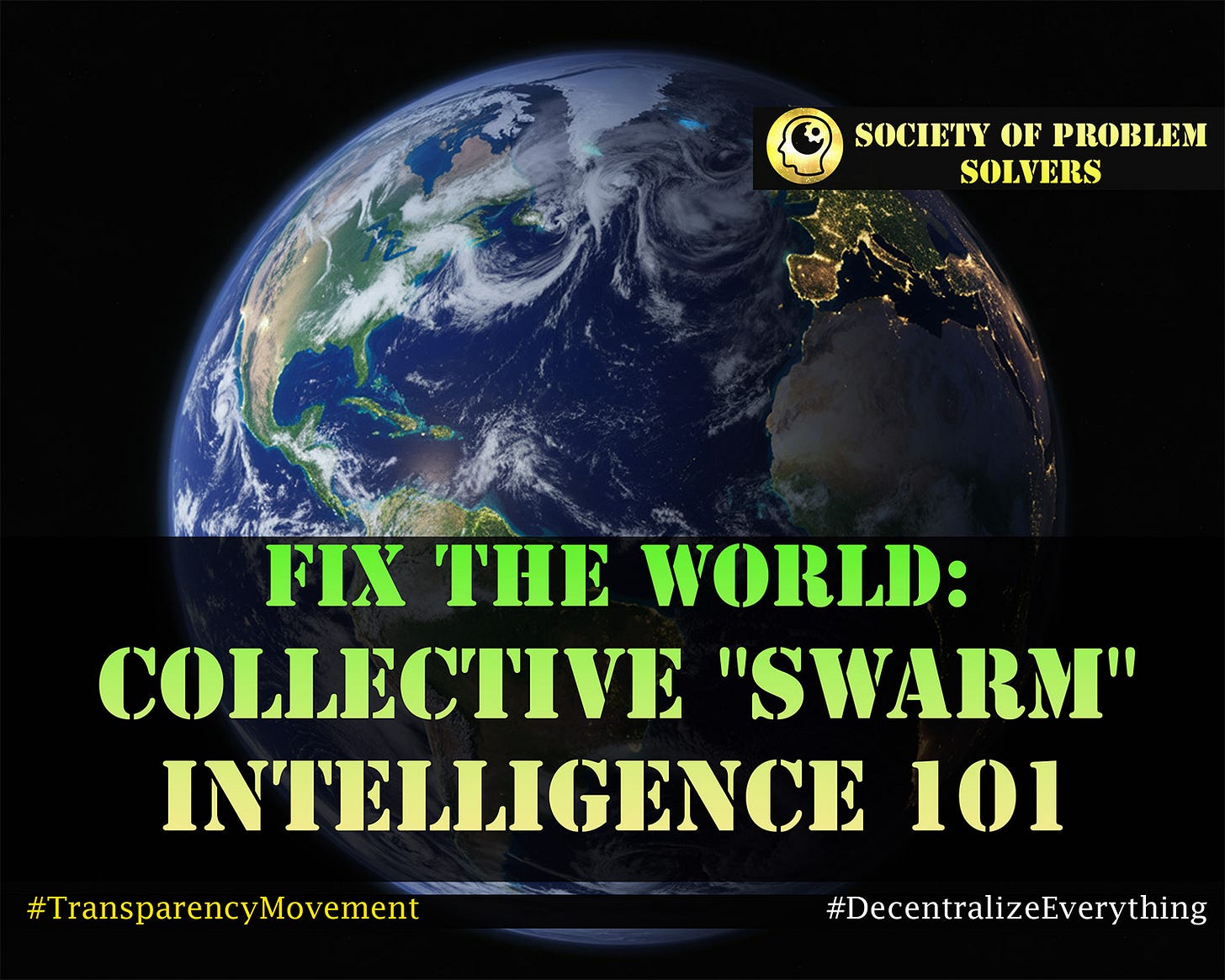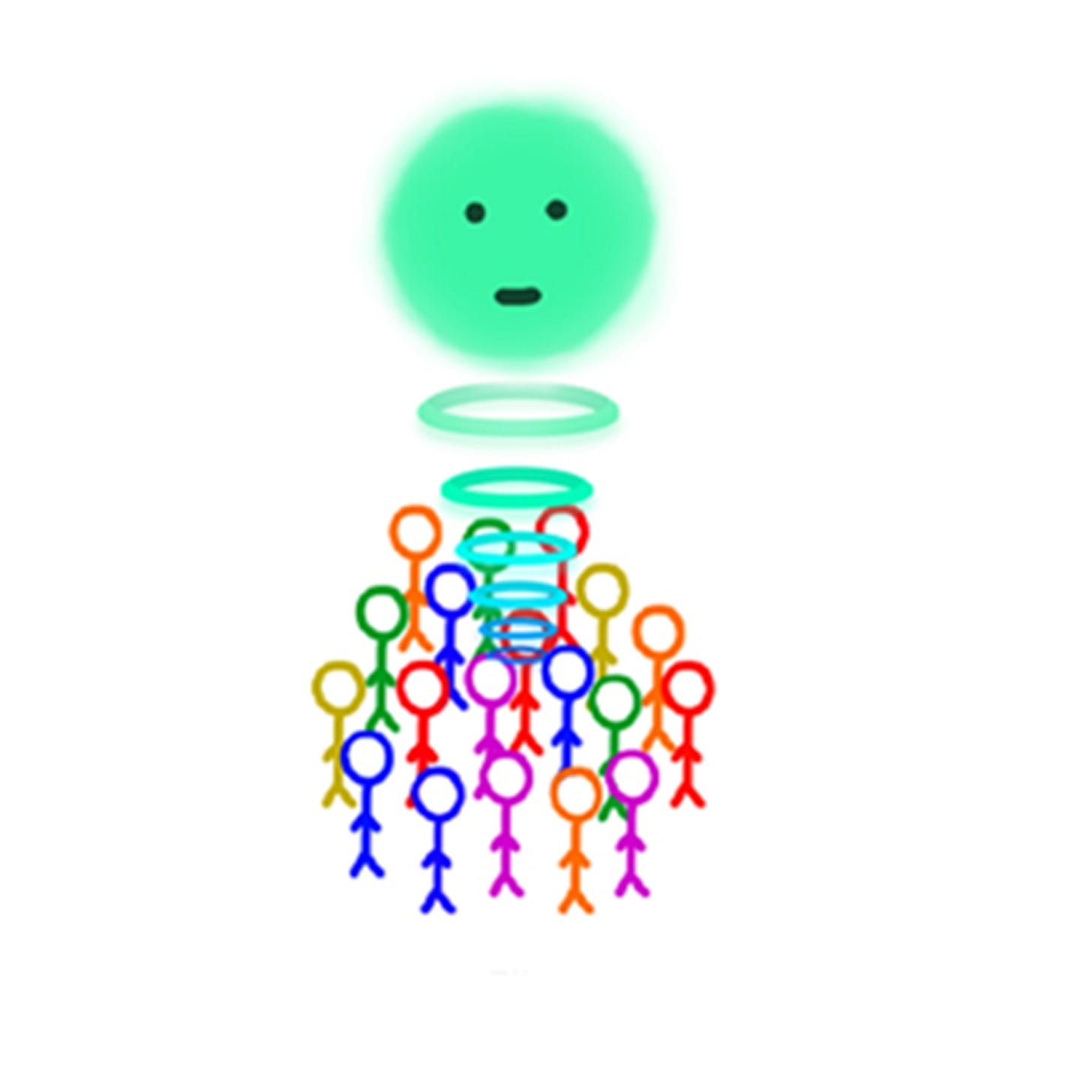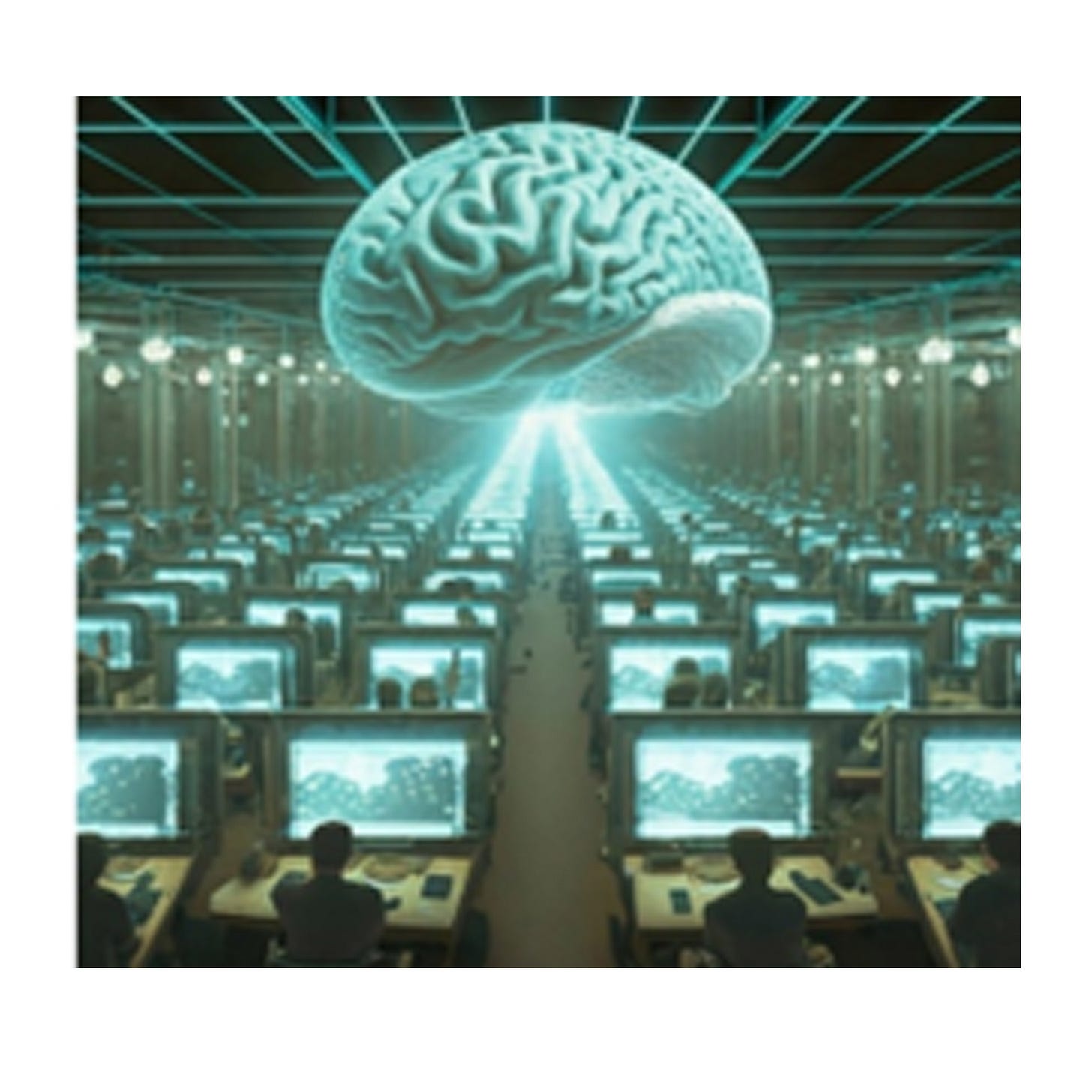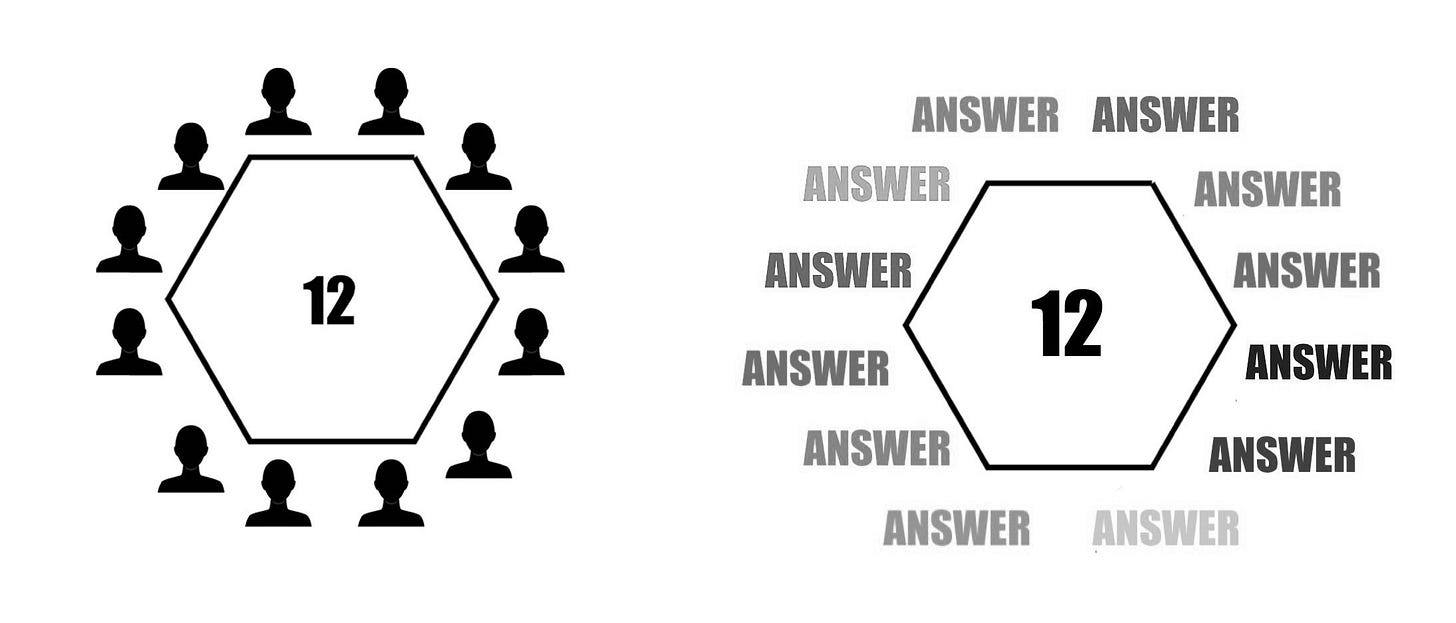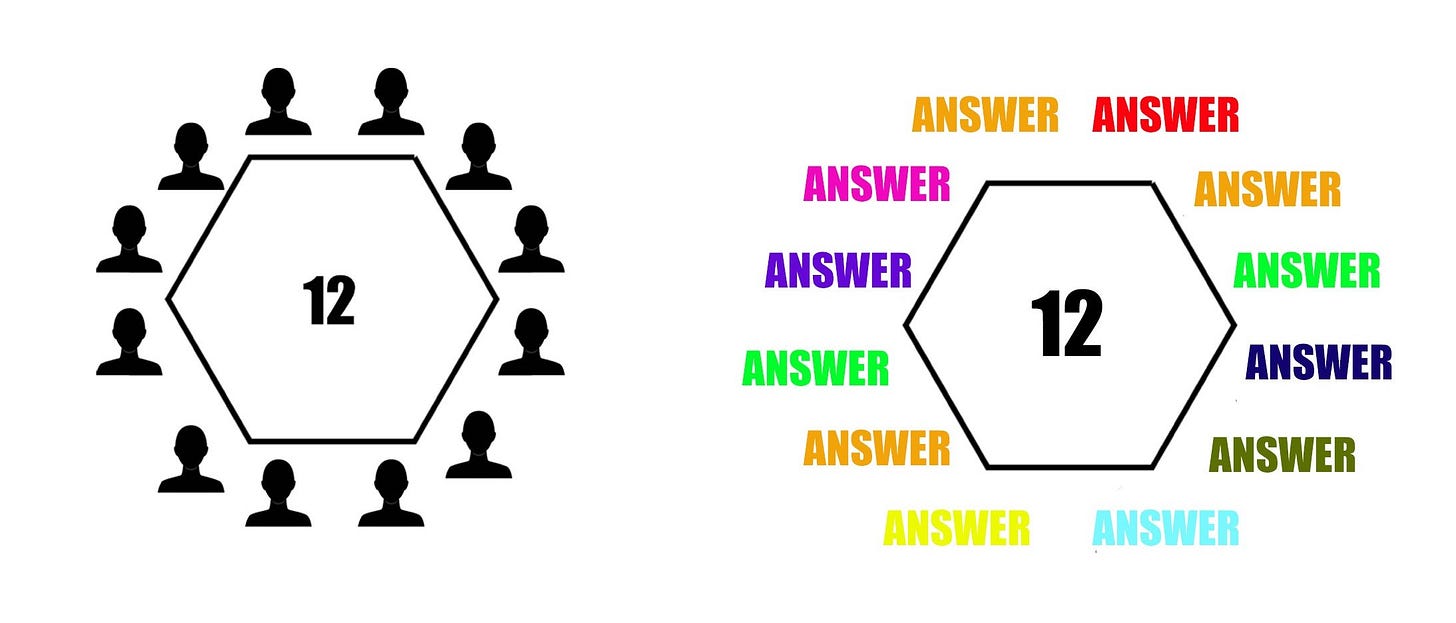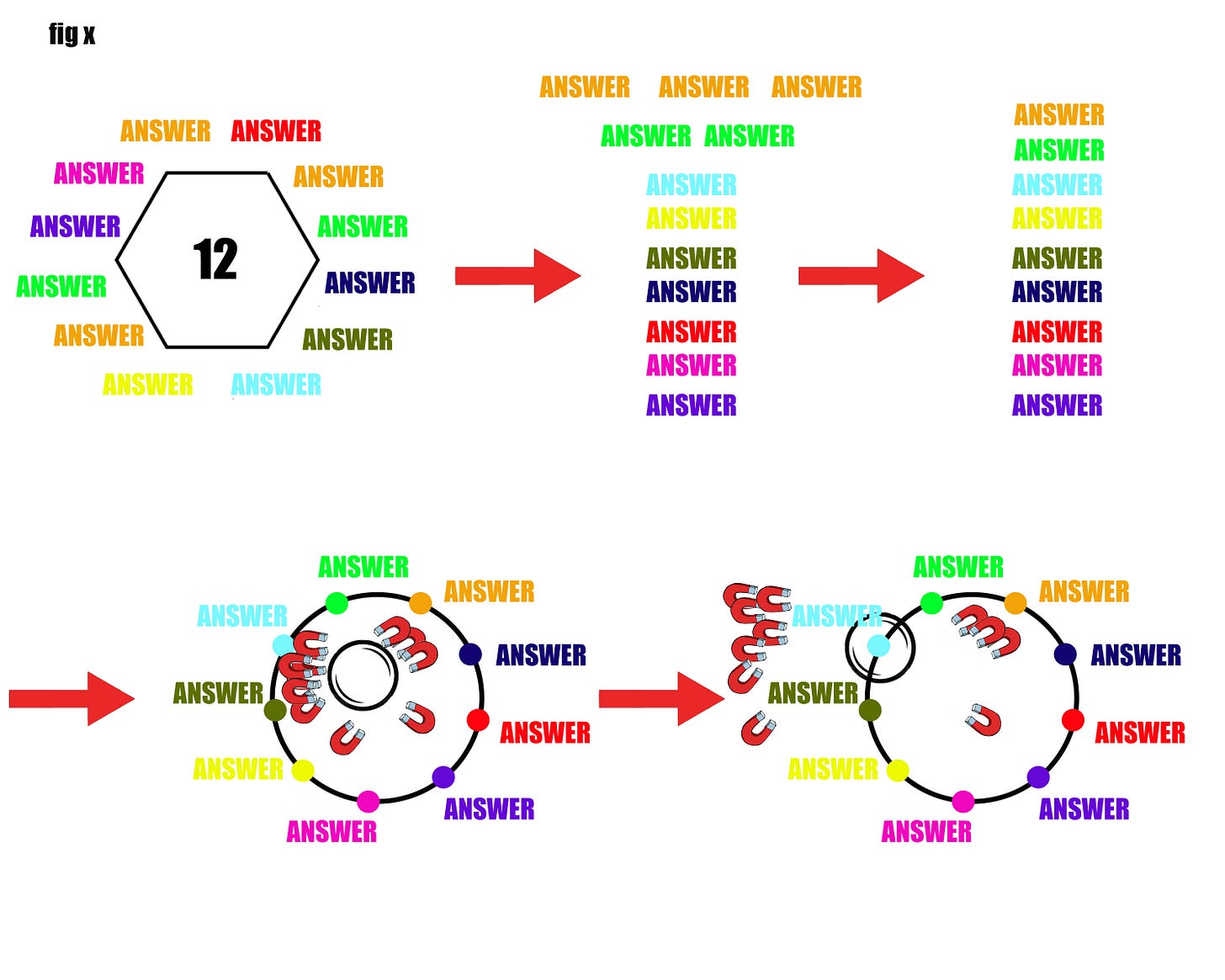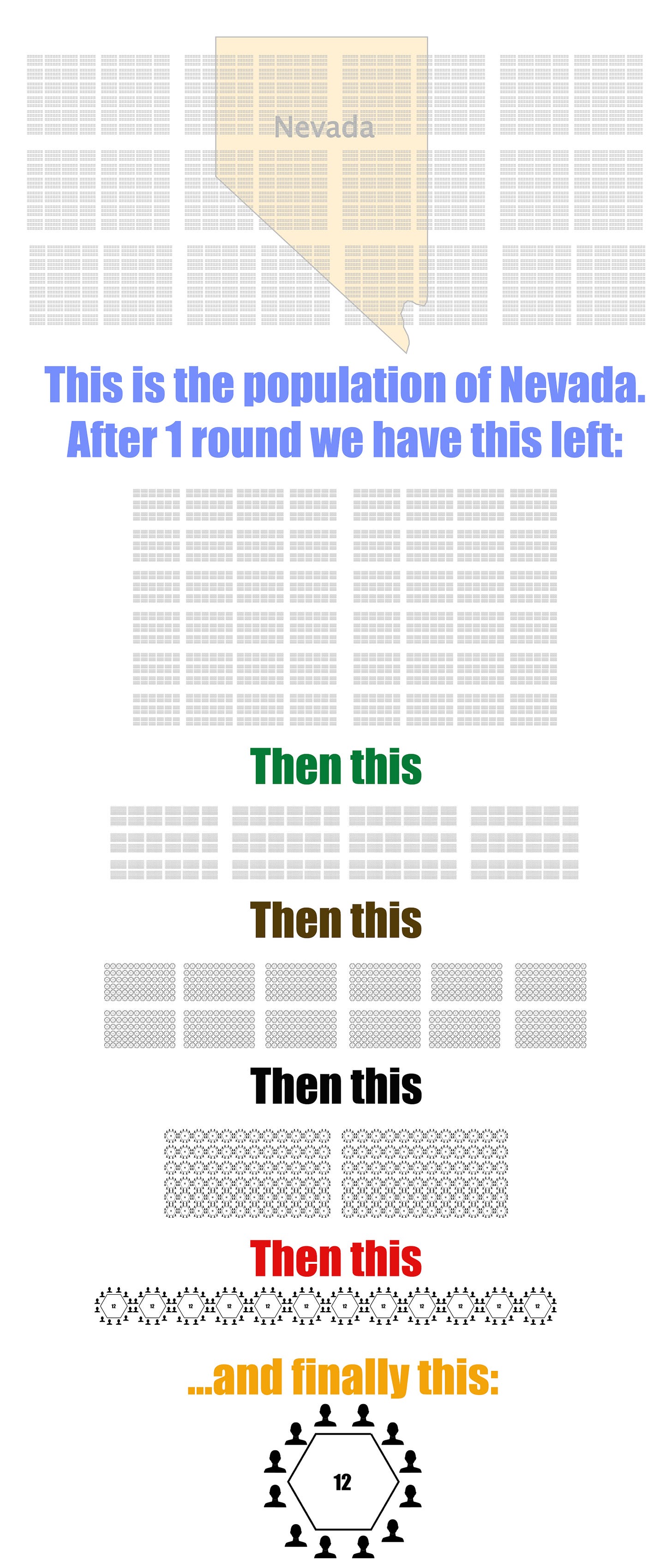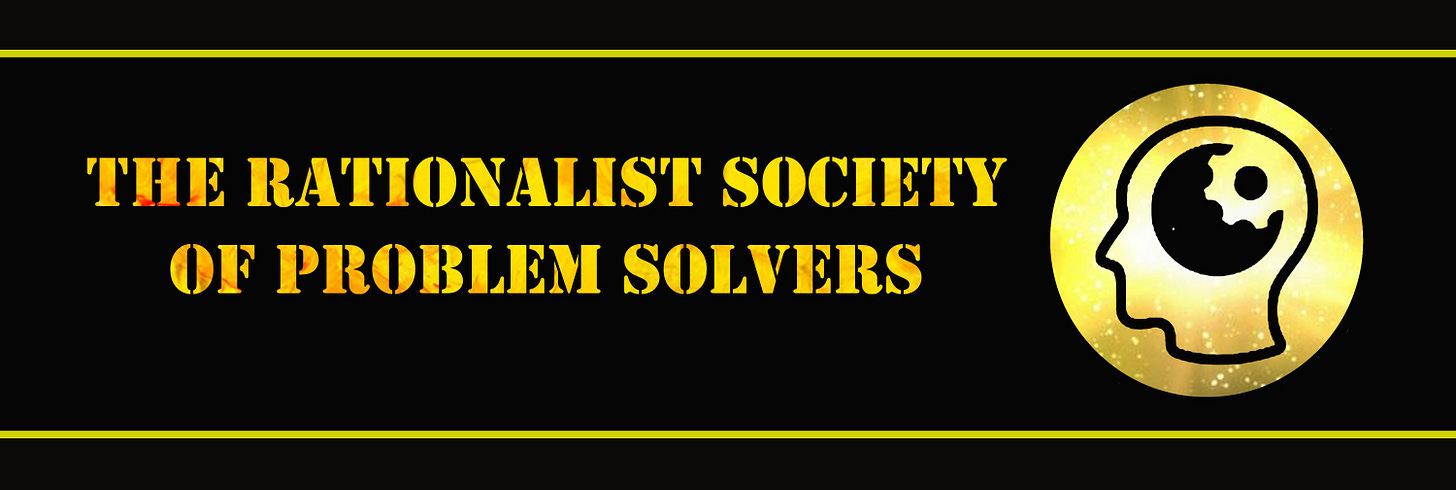Collective "Swarm" Intelligence 101: How To Fix The World
This is the key to everything. We can turn a million people into one wise, creative, and powerful brain. Decentralize all systems on Earth - governments, businesses, and more - with swarm intelligence
This July 4th, we would like you to imagine asking the whole world a question and getting one creative, wise, and interesting answer from the crowd.
This isn’t just possible, it is close on the horizon. And it could be done in under an hour. We would like to show you how.
If you are brand new to the idea of collective intelligence, welcome! This is a great place to start. In this article we are going to show what a Human Swarm Intelligence ecosystem would look like using graphics to help explain it. We can turn large groups of people into one - almost magically wise - new being, sometimes called a “genie.”
But first, a few refresher definitions:
COLLECTIVE INTELLIGENCE - Sometimes referred to as “The Wisdom of Crowds,” or “Human Swarm Intelligence,” or just “swarming.” It is the shared group intelligence that emerges from the collaboration and combined efforts of individuals. It is real and testable. It usually requires several conditions to optimize: 1) Decentralization 2) Diversity of Opinion - aka individualism 3) Coordination/Alignment/signal (How do the individuals interact, what problem are they solving together, and do they understand the problem?) 4) Aggregation - a way to aggregate answers from the group, often technological 5) Trust - in both the system and earned trust with each of the people in the swarm
SWARM - a decentralized group of individuals who collaborate or coordinate their actions in a collective manner, often facilitated by technology, who are on the same problem solving mission together.
A SWARM IN ACTION
Let’s examine the basics of how swarming within an ecosystem can work by forming an example. To start, let’s say someone(s) in the state of Nevada creates a new swarm with the mission statement: Making the systems in Nevada corruption resistant and more accountable to the people.
Like any system, trust matters. We cover trust HERE. But this article is more about the basics of how to extract one answer from large groups of people. So let’s assume the system we use is trustworthy, and the entire state of Nevada — 3 million people — joined our transparent high-trust swarm system, and we used decentralized earned trust to keep AI and Bots out of our systems. Now what?
Next, a question would be chosen to ask those 3 million people. Let’s say it was something like:
What amendment should we write to our State’s Constitution to help us prevent corruption in our systems?
This is how a swarm ecosystem could work (we say “could” instead of “would” because there are many different ways to collect the wisdom from crowds, and new ones are still being explored).
Participants would break up into smaller cells, or groups of 8-20 people or so. For our example here we chose the number 12 because it fits nicely into the design, but the perfect number is something we still need to test for - same thing with time limits, methods and more. For example, should the swarm answer in three minutes? Thirty minutes? A week? Should the answers be written? A video presentation? Audio? A PowerPoint presentation? In experiments, many methods seem to work well. But this is a new branch of science that only has a few people exploring it. We won’t know which ones work better for what kinds of questions until more dynamic systems are built, and we test them thoroughly. What we do know is that many methods seem to work (including pen and paper, and simple conversation), and nearly all swarming methods work better than individuals - even if they are experts.
In other words, humans solve problems better in high-trust groups. A group of two is better than a group of one, and a group of 10 is better than a group of two - IF the conditions are right. And the most important conditions to exist are independent thought (decentralization), trust in the system we choose to use, and then correctly identifying and understanding the problem. Usually experts are not needed for this, but often effort is.
For this specific example, our swarm will use written answers on a digital system, and each individual will have 5 minutes to complete their answer. The system would then take all 3 million people and divide them randomly into these smaller cells of 12 people each. Everyone’s names and identities would be hidden during the process to avoid the problems we listed in our previous article (cascading, groupthink, etc.). Each individual would then populate their own creative answers in that 5 minute window. The answers would populate in a circle and we wouldn’t know who answered what. Instead we would just see 12 random answers in a circle, like this:
If any of the answers were too similar or the same, members of this cell would then drag the answers together merging them into one. Then the system would randomly choose one of the wordings to represent any answers that were combined together. It is important to note here that answers that are different in logic should be left alone. So if this swarm was writing an amendment to Nevada’s State Constitution with the goal of fixing corruption, and we saw these three answers in our cell of 12 people:
Get the money out of politics
Remove money from politics
Take the money out of politics except all campaign contributions under $20 from personal non-business entities only.
We could see that #1 and #2 would be dragged together as they are basically the same answer; so we merge them into one. Then one of those two would be randomly selected by the system to represent them both. The merged answer would not hold any more weight or value than the other answers, it just wouldn’t be repeated twice and thus diluted in the process. But since the third answer is similar but different enough, we let it stand alone.
We illustrate this here with colors for the answers:
If this swarm answered like this, and the colors represented their answers, they would then merge the similar ones so they weren’t double or triple represented in the next phase:
So even though twelve people began the process, the number of answers were pared down to only nine after we combined the ones that the consensus of the cell thought were too similar to each other - the orange and the bright green answers. After the answers were pared down, the remaining nine answers would go in a circle and the twelve members of the cell could then use Dr. Rosenberg’s digital method, or a similar method such as coins for an idea economy, or even discourse, (we have tested several methods that all seem to work well) in order to choose which answer or answers are going on to the next round.
We admittingly like Dr. Rosenberg’s method a lot. The one downside is everyone must be online at the same time. We like using digital coins placed on ideas like an economy as an alternative too. Dr. Rosenberg’s method uses a digital magnet and algorithm to form a human swarm, and then the members push and pull on the clear hockey puck in the middle using their digital magnets until one answer is settled on. The full process in a cell of twelve people would look like this, after a question is asked, and their answers populated:
In this case, the light blue answer would be the one chosen by the cell, and the eleven other answers would be eliminated (or could be ranked) and the light blue one would go onto the next round (or top 3, etc). Using this method we can populate a creative, well thought-out answer from an entire population of 3 million people in only 7 iterations of swarming. So in 35 minutes. It would look like this:
Once we arrived at the final twelve answers, the entire three million people could use their magnets (or whatever other method we chose) and we would come to a final decision as a swarm. From three million people, to one answer in seven iterations.
A few final things on a swarming ecosystem process:
Even though coming up with one unified answer from a swarm is possible, for some problems it might be wiser to generate the top five answers. Or top two. Then, experiment several answers against each other to see which one gets the best results. Remember every decision by a swarm should be results-driven, so the swarm knows when to make changes or reverse course. Whenever possible, metrics should be assigned to the mission statement or goal of the swarm.
How a question is worded to a swarm matters. For problems that require imagination, the more creative the swarm can be, the better the results seem to be. While Human Swarm Intelligence is one thing, we think what is even more exciting is what we call Human Swarm Imagination. While we have only done this on smaller swarms of less than 550 people so far, we have found that sometimes broad or open questions are the best like “What would you do if you were in charge of this system/business/etc?” Or “What do you see as our biggest weakness and how would you solve it?” From what we have witnessed with businesses that swarm, these are the types of questions that have turned into the most fruitful solutions.
Rather than having one person decide what question to ask the swarm, you can have the swarm decide what questions to ask itself. This is a way to optimize self-organization in a decentralized group. The swarm can ask itself stock questions like “What question should we ask ourselves today to help us achieve our mission?” Or “What problems should the swarm work on today?” Or “What part of our Society needs the most help right now, and how could we help them?”
Confidence ratings can (and likely should) be added to swarms, so answers can have confidence scores attached to them by the decentralized individual members for more in-depth evaluations of answers. Maybe in order to implement a policy it must have 80% rating or higher - which is much higher than the 51% we require of Congress and the Senate, for example. In fact most of their “solutions” have the worst confidence score rating possible - 51%.
You can run the same question through a swarm many times. Each time the swarm learns, and each time the answer has the opportunity to become refined, or evolved, or even changed.
Individuals in swarms should be properly educated before participating in live swarms. Just like driving a car or flying a plane or using electricity. In a decentralized group we are all driving the direction of it, and that is a big responsibility - and we all know that groups have dangers - so we need education to help be the systemic way we make sure the groups optimizes and avoids those perils (such as www.SwarmAcademy.ai - currently being remodeled).
Setting our own culture is wise. Instead of letting top-down entities define our culture we should have our own code of conduct. Keep in mind that the iterated prisoner’s dilemma suggests that the more trustworthy our society or system is, the better outcomes it will get. Culture matters for results.
We have debated having the “losers” of the first round of a live swarm form another fresh swarm, to see what happens with them, to make sure that some good ideas weren’t running into bad luck in the first round, and new knowledge or a clever answer wasn’t being accidentally overlooked. But we cannot test this hypothesis without first having the ecosystems built to run larger swarms. Always running questions through a swarm more than once is another possible remedy to this potential problem.
In the final diagram for this section we would like to show how we could swarm almost twice the size of Earth in just nine iterations if we had twelve people in each cell. With 5 minute rounds that means we could get a creative answer from all of Earth in 45 minutes of our “game.”
From 14 billion down to one answer like this:
And that’s it.
This is an example of a system where we could get one answer from the entire planet Earth.
In closing, if our epistemology is correct, then we should be optimistic. Why? Because all problems are solvable, and people solve problems better in groups.
All of the major systems have been corrupted on Earth - government, media, academia, food, and even science. So we need something bold to fix this corruption. We must build new systems. Ones with transparency, decentralization, trust, and with what we believe is our new secret weapon: Collective SWARM Intelligence.
For over 3 billion years on this planet there were only single-celled organisms. Then one day they somehow learned to work together and make complex multi-celled creatures . Right now we are like those single-celled organisms. Our next evolution is finding how to solve problems together, better.
Thanks for reading!
JOIN THE NEW CONNECTION ENGINE DISCORD GROUP! Where we will be discussing solutions with other like minded thinkers from all over the globe, here, hosted by
J. Friday:
https://discord.com/invite/r27nSzh9
All problems that do not defy the laws of physics are solvable with the right knowledge - David Deutsch
Humans solve problems better in high-trust groups, and solving problems is happiness!
#CollectiveIntelligence
#SwarmAcademy #NetworkState #LEADERLESS #ResultsMatterMost #DecentralizeEverything #DemandTransparency
COMMENTS ARE FOR EVERYONE AS A PLACE TO THINK-TANK SOLUTIONS. They will never be for paid-only subscribers and we will never charge a subscription.
Learn more:


